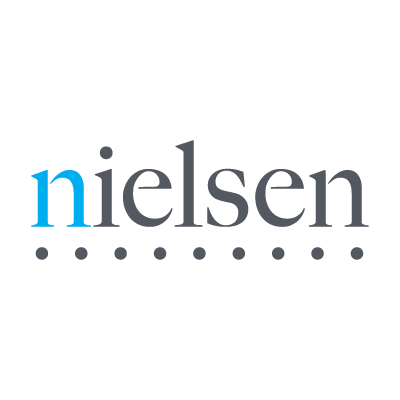
Nielsen Attribution: Complete Buyer's Guide
Independent measurement validation for enterprise organizations requiring unbiased attribution analysis across complex AI marketing campaigns.
Nielsen Attribution is an independent measurement platform that provides unbiased validation of marketing performance claims across AI-powered campaigns and complex multi-channel customer journeys.
Market Position & Maturity
Market Standing
Nielsen Attribution operates from a position of established market authority in measurement and analytics, leveraging Nielsen's decades-long reputation in media measurement to address the growing demand for independent attribution validation [45][51].
Company Maturity
Nielsen's research capabilities enabled independent verification of Google's AI campaign performance claims, confirming 17% ROAS lift for AI-powered YouTube ads [49][51].
Growth Trajectory
Expanding demand for independent measurement validation as AI marketing adoption accelerates. Documented implementations with enterprise customers like Barceló Hotel Group and validation partnerships with major platforms like Google demonstrate market traction [38][51].
Industry Recognition
Nielsen's role as an independent measurement authority. The platform's validation of Google's AI campaign effectiveness demonstrates its position as a trusted third-party verification source [45][51].
Strategic Partnerships
The platform's ability to provide independent validation across multiple marketing platforms positions it as a neutral measurement authority [45][51].
Longevity Assessment
Nielsen's established market presence and measurement expertise spanning decades provide confidence in continued operation and platform development [46][52].
Proof of Capabilities
Customer Evidence
Barceló Hotel Group's implementation provides comprehensive proof of capabilities, with the platform enabling daily campaign optimization and redistribution of attribution credit across paid and organic channels, resulting in 22% higher conversion rates from previously unattributed traffic [38].
Quantified Outcomes
Nielsen's independent verification of Google's AI campaign analysis revealed 17% higher ROAS for AI video campaigns on YouTube and 23% sales effectiveness increase when combining campaign types [51].
Case Study Analysis
Barceló's implementation followed an 11-week phased rollout including discovery, design testing, and validation phases, delivering the organization's cleanest dataset ever through proper data standardization [38].
Market Validation
CPG brands report budget reallocation efficiency improvements through Nielsen's Marketing Mix Modeling capabilities [42].
Competitive Wins
Nielsen's independent measurement positioning versus platform-specific attribution tools. The platform's research suggests platform-reported metrics may be inflated, with Nielsen providing external validation that reveals attribution blind spots traditional models miss [45][51].
Reference Customers
Barceló's deployment required cross-functional governance involving analyst, technical, and product teams, but delivered daily monitoring capabilities that reduced optimization cycles by 70% [38].
AI Technology
Nielsen Attribution employs algorithmic fractional attribution using machine learning to assign dynamic credit across touchpoints, differentiating from rule-based attribution models [44].
Architecture
The platform's deterministic analysis architecture uses Nielsen's ID resolution system with persistent, device-agnostic identifiers to track consumer journeys using first-party data rather than cookie-dependent tracking [38][44].
Primary Competitors
Compared to Rockerbox, Nielsen offers independent validation but lacks Rockerbox's e-commerce-focused time-decay models and faster implementation timelines [39]. Against HubSpot, Nielsen provides superior media mix optimization capabilities but falls short for product-led growth funnel tracking and lacks HubSpot's accessible pricing structure [43].
Competitive Advantages
Nielsen's established measurement authority and ability to provide unbiased performance verification across multiple marketing platforms. The platform's deterministic analysis using first-party data provides advantages in cookieless environments [38][44][47].
Market Positioning
Nielsen excels for enterprises with dedicated technical resources and budget for comprehensive measurement implementation requiring audit-level accuracy [46][53].
Win/Loss Scenarios
Win scenarios favor Nielsen when organizations require independent measurement validation, have substantial media spend across multiple platforms, and need to resolve attribution disputes between platform-reported and actual performance [38][45][51]. Loss scenarios occur when organizations prioritize rapid deployment, have limited technical resources, or require budget-friendly attribution solutions [40][41][46].
Key Features

Pros & Cons
Use Cases
Featured In Articles
How We Researched This Guide
About This Guide: This comprehensive analysis is based on extensive competitive intelligence and real-world implementation data from leading AI vendors. StayModern updates this guide quarterly to reflect market developments and vendor performance changes.
55+ verified sources per analysis including official documentation, customer reviews, analyst reports, and industry publications.
- • Vendor documentation & whitepapers
- • Customer testimonials & case studies
- • Third-party analyst assessments
- • Industry benchmarking reports
Standardized assessment framework across 8 key dimensions for objective comparison.
- • Technology capabilities & architecture
- • Market position & customer evidence
- • Implementation experience & support
- • Pricing value & competitive position
Research is refreshed every 90 days to capture market changes and new vendor capabilities.
- • New product releases & features
- • Market positioning changes
- • Customer feedback integration
- • Competitive landscape shifts
Every claim is source-linked with direct citations to original materials for verification.
- • Clickable citation links
- • Original source attribution
- • Date stamps for currency
- • Quality score validation
Analysis follows systematic research protocols with consistent evaluation frameworks.
- • Standardized assessment criteria
- • Multi-source verification process
- • Consistent evaluation methodology
- • Quality assurance protocols
Buyer-focused analysis with transparent methodology and factual accuracy commitment.
- • Objective comparative analysis
- • Transparent research methodology
- • Factual accuracy commitment
- • Continuous quality improvement
Quality Commitment: If you find any inaccuracies in our analysis on this page, please contact us at research@staymodern.ai. We're committed to maintaining the highest standards of research integrity and will investigate and correct any issues promptly.